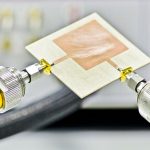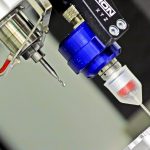The research of the Antennas and Propagation Lab (APL) is focused on the analysis and design of antennas for microwave, millimeter and THz applications, and in the study of propagation and modeling of the radio channel, both theoretically and experimental (propagation measures).
APL has long experience in the design of wideband and multiband antennas for mobile and wireless systems using the Theory of Characteristic Modes. Antennas for mobile terminals, MIMO and UWB systems, DVB-T/DVB-H standards and for vehicular applications have been designed by the research group in the framework of different projects.
APL has also a solid experience in slotted waveguide array design for radar and satellite communication applications, developing efficient software tools for its analysis and design. More recently, APL investigates on new wave guiding structures based on the use of novel artificial surfaces which are suitable for millimeter and submillimeter-wave bands and on novel THz wave guiding structures.
Also the APL, has a line of work focused on the study of the propagation and modeling of the radio channel. Narrowband propagation loss models are developed and broadband aspects related to dispersion are covered in time and frequency. Channel models are developed and validated based on measurement campaigns in real scenarios. We
have experience in channel models for cellular systems (interior and
exterior), vehicular systems (V2I and V2V), MIMO, UWB and millimeter
waves.
APL members have led and participated in several research projects relating these research areas and achieved results are available through the numerous papers listed in the publications menu.
APL has strong links with well-known companies in the antenna field and has been an active member of the Antenna Center of Excellence (ACE) European Network and the European School of Antennas (ESoA).
The APL laboratory comprises several facilities for measure and manufacture antennas and microwave devices, as an anechoic chamber and CNC Milling machine.
  
|